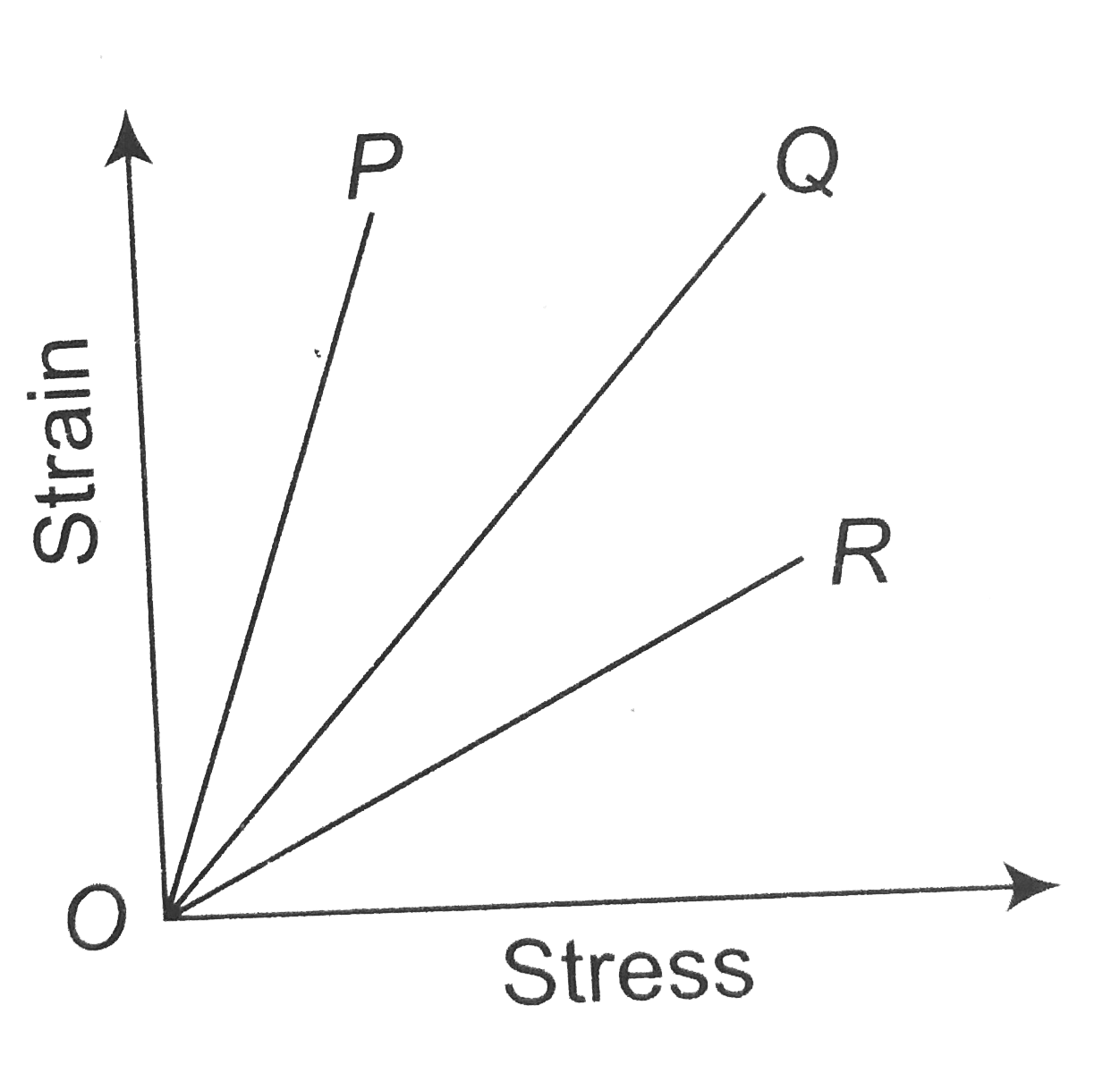The stress strain graph for a metal wire is shown in the fig. Up to the point E, the wire returns to its original state O along the curve EPO, when it is gradually unloaded. Point B corresponds to the fracture of the wire.

(a) Up to what point on the curve is Hooke's law obeyed? (this point some times called proportional limits).
(b) Which point on the curve corresponding to elastic limit or yield point of the wire?
(c ) Indicate the elastic and plastic regions of the stress-strain graph.
(d) Describe what happens when the wire is loaded up to a stress corresponding to the point A on the graph and then unloaded gradually. In particular explain the dotted curve.
(e) What is peculiar about the portion of the stress- strain graph from C to B? Up to what stress can the wire be subjected without causing fracture?
(i) Hooke’s law is obeyed upto the point P, because upto this point, stress strain .
(ii) Point E corresponds to elastic limit (yield point) because the wire returns to original state O along EPO is it is gradually unloaded.
(iii) The elastic region is from O to E and the plastic region is from E to B.
(iv) Upto point P, stress is proportional to strain. Between P and E strain increases more rapidly than stress and Hooke’s law is not obeyed. When the wire is unloaded at any point A beyond E, the wire does not retrace the curve AEPO but follows the dashed curve AO’. When the stress becomes zero, a residual strain OO’ is left in the wire.
(v) Between C and B, the wire virtually flows out, i.e., the strain increases even the wire is being unloaded.
Topper's Solved these Questions
- PROPERTIES OF MATTERBOOK - VMC MODULES ENGLISHCHAPTER - PROPERTIES OF MATTEREXERCISE - Level -1
90 Videos
- PROPERTIES OF MATTERBOOK - VMC MODULES ENGLISHCHAPTER - PROPERTIES OF MATTEREXERCISE - Level -2
50 Videos
- MOVING CHARGES & MAGNETISM BOOK - VMC MODULES ENGLISHCHAPTER - MOVING CHARGES & MAGNETISM EXERCISE - IN-CHAPTER EXERCISE-K
10 Videos
- QUIZBOOK - VMC MODULES ENGLISHCHAPTER - QUIZEXERCISE - PHYSICS
30 Videos
Similar Questions
Knowledge Check

The stress strain graph for a metal wire is as shown in the figure. In the graph, the region in which Hooke's law is obeyed, the ultimate strength and fracture are represented byAOA, C, DBOB, D, ECÂ OA, D, EDOB, C, D

The strain stress curves of three wires of different materials are shown in the figure. P, Q and R are the elastic limits of the wires. The figure shown that
View SolutionThe stress versus strain graphs for wires of two materials A and B are as shown in the figure. If YAandYB are the younng's moduli of the materials, then

View SolutionThe stress versus strain graphs for wires of two materials A and B are as shown in the figure. If YAandYB are the younng's moduli of the materials, then

View SolutionA current I flows along a thin wire shaped as shown in figure. The radius of the curved part of the wire is r. The field at the centre O of the coil is:

View SolutionFor the shown graph slope of graph from point A to point B :

View SolutionFind the equation of tangent of tangent of the curve y = b⋅e−x/a at that point at which the curve meets the Y-axis.
View SolutionShow that the slope of adiabatic curve at any point is Yama times the slope of an isothermal curve at the corresponding point.
View Solution

